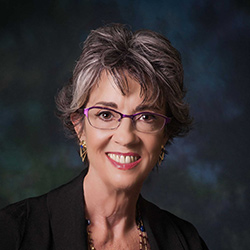By Robyn Stone
Academic institutions can play a critical role in training future leaders in the field of aging services. But providers must help, writes Robyn Stone.
To get a good job, get a good education.
I heard this maxim more than once during my formative years. Indeed, teachers and parents repeated it regularly in an attempt to convince members of my generation that the path to a successful career—and a successful life—went straight through the local college campus.
Decades later, that maxim still holds true. Colleges and universities play an essential role in developing our nation’s future leaders. I firmly believe these educational institutions can play a critical role in strengthening the field of long-term services and supports (LTSS) by educating and training the executives and managers we will need to lead our organizations into the future.
Before we get too excited about this possibility, however, we must acknowledge two caveats:
First, colleges and universities have a long way to go before they will be prepared to offer robust training to prospective leaders in our sector.
Second, no leadership training system will ever be developed, implemented, or brought to scale if providers sit back and wait for educators to do all the work.
The secret to success is understanding that the job of creating high-quality leadership training programs rests with all of us—educators and providers alike.
Fortunately, a very dedicated group of organizations in the LTSS field is already working to develop partnerships between educators and providers. I wrote about this work in 2019 after participating in the first symposium hosted by the Vision Centre, a national group working to develop strong, sustainable university leadership programs and paid field experiences for LTSS leaders in training. LeadingAge is a founding member of the Vision Centre.
I attended another Vision Centre symposium earlier this summer and was pleased to see that the commitment to academic partnerships remains strong. I applaud and celebrate this work, which I hope will lead to the development of sustainable academy-based leadership programs—tailored to aging services—across the nation.
LTSS provider organizations must support this national work by promoting academic partnerships at the local level. Here are a few action steps I hope you will consider taking in your corner of the country:
- Become aware of the educational opportunities in your community and identify colleges and universities that can serve as workforce pipelines for your organization.
- Approach these schools and give them good reasons for establishing a training program for LTSS leaders. In most instances, the task of bringing providers and academic institutions together rests with providers.
- Help your academic partners develop robust leadership training programs. You know what it takes to be a leader in our field. You can be a valuable resource to curriculum developers.
- Recruit students for new training programs. Colleges and universities are not charitable institutions. They will need a certain number of enrollees to justify their investment in a new training initiative. You’ll have to help bring those first students to the table.
- Offer paid internships to training program participants and good jobs to program graduates. You can’t ask students to participate in leadership training and then watch them struggle to find employment.
- Step into the classroom to teach courses that will prepare students for the work we need them to do. Finding qualified faculty may be the biggest challenge facing fledgling training programs. Providers must do their part to fill that gap.
Granted, this is a lot of work. But it is crucial work. The future of our field depends on our willingness to roll up our sleeves and get busy.

Robyn I. Stone, DrPH, is senior vice president of research at LeadingAge, and co-director of the LeadingAge LTSS Center @UMass Boston. Her widely published work addresses long-term care policy and quality, chronic care for people with disabilities, the aging services workforce, affordable senior housing, and family caregiving.
